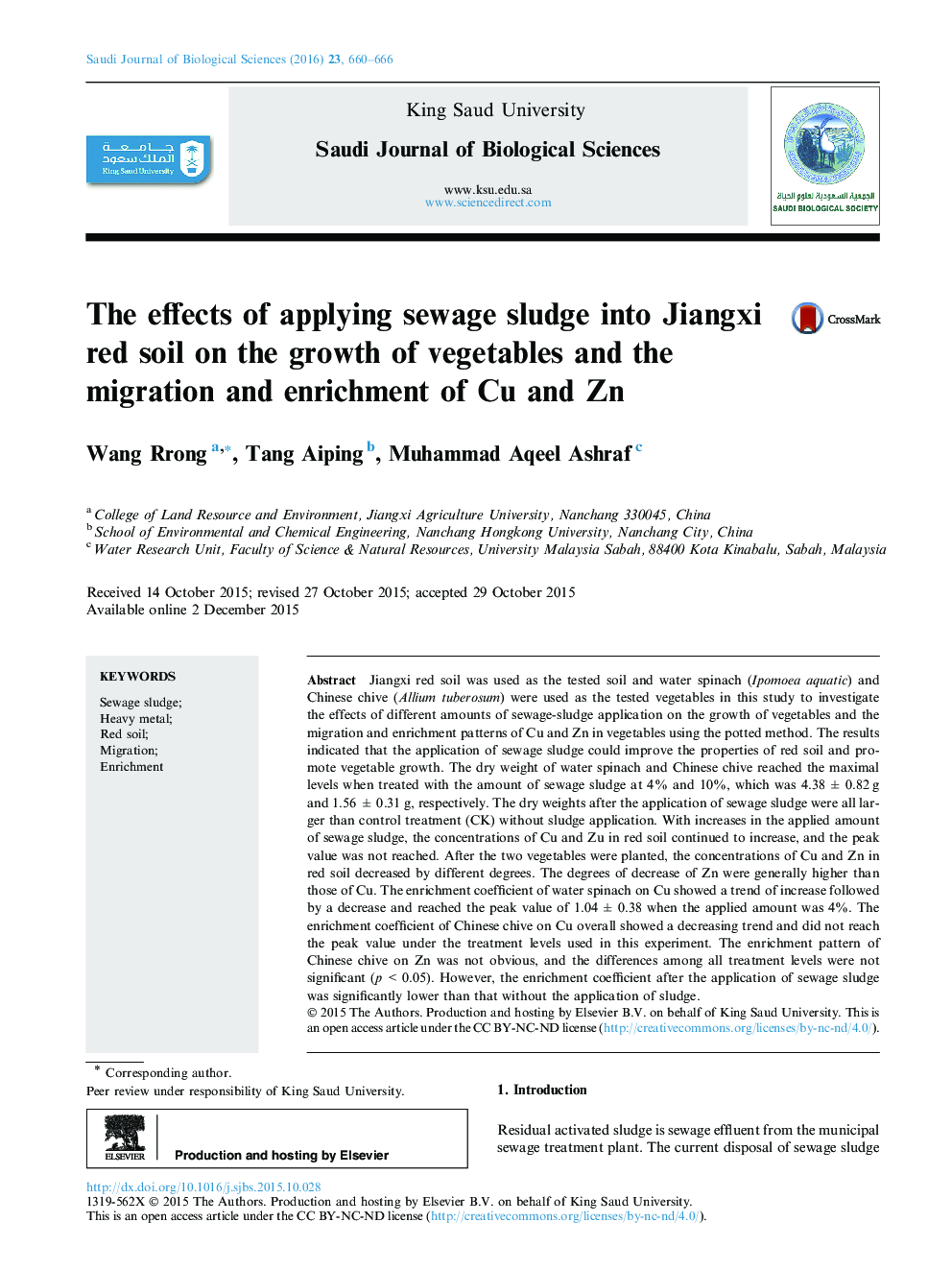| Article ID | Journal | Published Year | Pages | File Type |
|---|---|---|---|---|
| 4406124 | Saudi Journal of Biological Sciences | 2016 | 7 Pages |
Jiangxi red soil was used as the tested soil and water spinach (Ipomoea aquatic) and Chinese chive (Allium tuberosum) were used as the tested vegetables in this study to investigate the effects of different amounts of sewage-sludge application on the growth of vegetables and the migration and enrichment patterns of Cu and Zn in vegetables using the potted method. The results indicated that the application of sewage sludge could improve the properties of red soil and promote vegetable growth. The dry weight of water spinach and Chinese chive reached the maximal levels when treated with the amount of sewage sludge at 4% and 10%, which was 4.38 ± 0.82 g and 1.56 ± 0.31 g, respectively. The dry weights after the application of sewage sludge were all larger than control treatment (CK) without sludge application. With increases in the applied amount of sewage sludge, the concentrations of Cu and Zu in red soil continued to increase, and the peak value was not reached. After the two vegetables were planted, the concentrations of Cu and Zn in red soil decreased by different degrees. The degrees of decrease of Zn were generally higher than those of Cu. The enrichment coefficient of water spinach on Cu showed a trend of increase followed by a decrease and reached the peak value of 1.04 ± 0.38 when the applied amount was 4%. The enrichment coefficient of Chinese chive on Cu overall showed a decreasing trend and did not reach the peak value under the treatment levels used in this experiment. The enrichment pattern of Chinese chive on Zn was not obvious, and the differences among all treatment levels were not significant (p < 0.05). However, the enrichment coefficient after the application of sewage sludge was significantly lower than that without the application of sludge.
